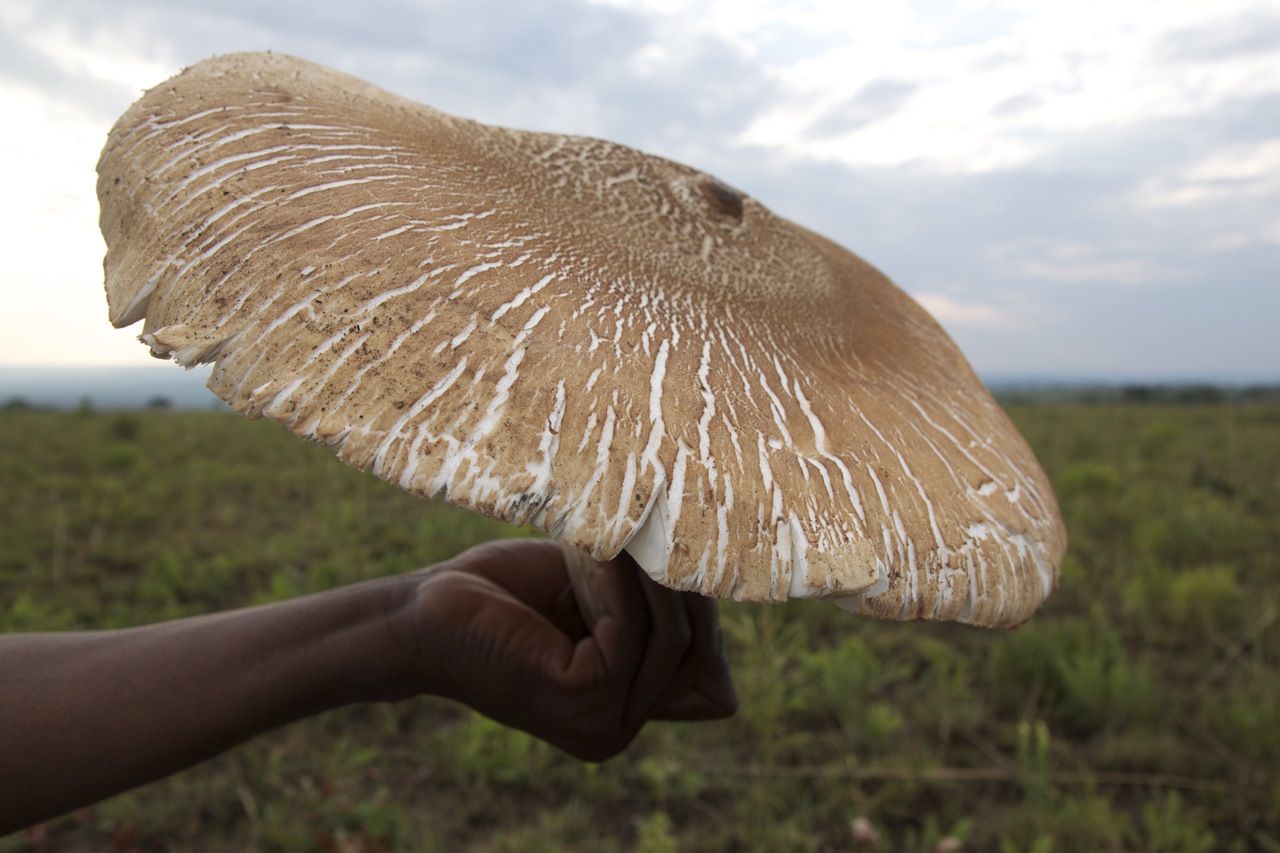
The World’s Largest Edible Mushroom Lives in Symbiosis with Termites and That’s Why It Grows So Huge
In turn, the fungi associated with termites receive a steady supply of plant material, in a location with fine-tuned temperature and moisture content optimal for growth.
But why does the mushroom grow so big? Well for one, it acquires a huge amount of resources from its insect mutualist, as termite colonies can reach densities in the millions, with countless individuals foraging for organic material to feed them. But it’s size is not only due the large amounts of energy it obtains: this horizontally transferred fungus must spread enough spores to be found by suitable termite species. In low producing savanna ecosystems, the distribution of termite mound may be quite patchy. So, to ensure that it gets a good chance at finding a suitable substrate, the fungus has evolved one of, if not the, largest mushrooms on the planet. The larger the mushroom, the more spores it produces, making it easier for initial termite foragers to actually find them.
Titanicus grows in the winter during the rains, which is prime mushroom season in its habitat. It has a meaty texture and a savory, smoky taste which is considered to be particularly delicious. And a single cap can provide a full meal for an entire family…
But why does the mushroom grow so big? Well for one, it acquires a huge amount of resources from its insect mutualist, as termite colonies can reach densities in the millions, with countless individuals foraging for organic material to feed them. But it’s size is not only due the large amounts of energy it obtains: this horizontally transferred fungus must spread enough spores to be found by suitable termite species. In low producing savanna ecosystems, the distribution of termite mound may be quite patchy. So, to ensure that it gets a good chance at finding a suitable substrate, the fungus has evolved one of, if not the, largest mushrooms on the planet. The larger the mushroom, the more spores it produces, making it easier for initial termite foragers to actually find them.
Titanicus grows in the winter during the rains, which is prime mushroom season in its habitat. It has a meaty texture and a savory, smoky taste which is considered to be particularly delicious. And a single cap can provide a full meal for an entire family…
Advertisements
28 September 2022
Advertisements



